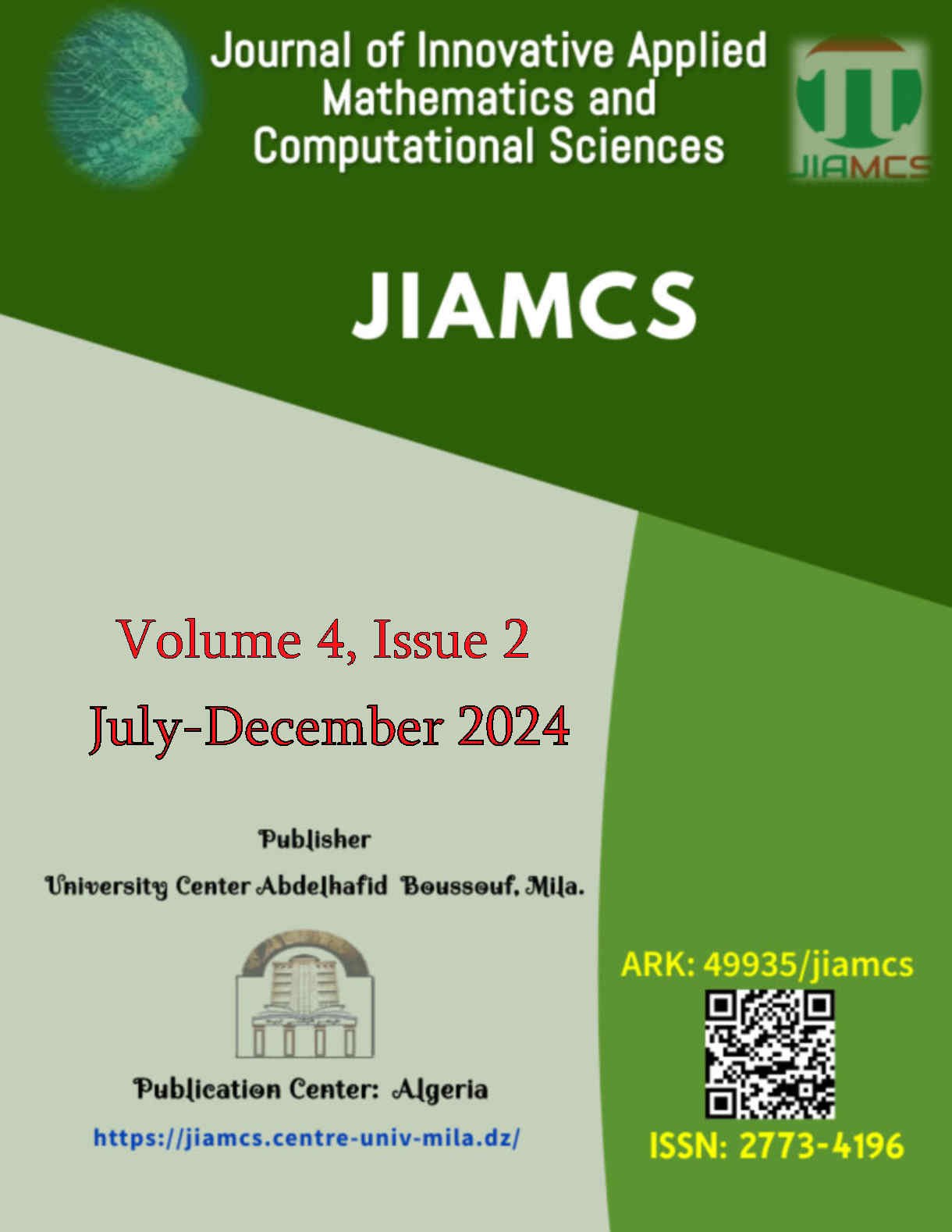A new concept of q-calculus with respect to another function
Main Article Content
Abstract
In this paper, we present an approach to quantum calculus and its applications through a functional method. This approach enables the exploration of the number-theoretic properties of q-calculus in a functional framework, facilitating the modification of variable-order q-differential equations and their solutions. The paper primarily focuses on the functional aspects of quantum number theory, functional-order q-derivatives, and their applications.
Downloads
Article Details

This work is licensed under a Creative Commons Attribution-NonCommercial-NoDerivatives 4.0 International License.
- Authors keep the rights and guarantee the Journal of Innovative Applied Mathematics and Computational Sciences the right to be the first publication of the document, licensed under a Creative Commons Attribution-NonCommercial-NoDerivatives 4.0 International License that allows others to share the work with an acknowledgement of authorship and publication in the journal.
- Authors are allowed and encouraged to spread their work through electronic means using personal or institutional websites (institutional open archives, personal websites or professional and academic networks profiles) once the text has been published.
References
[1] W. A. Al-Salam, q-Bernoulli Numbers and Polynomials, Mathematische Nachrichten, 17(3-6) (1958), 239–260.
[2] T.M. Apostol, Introduction to Analytic Number Theory, Undergraduate Texts in Mathematics, Springer, 1976.z
[3] W.N. Bailey, Generalized Hypergeometric Series, Steshert-Hafner Service Agency, New York and London 1964.
[4] T. Ernst, A New Notation for q-Calculus and a new q-Taylor Formula, Uppsala University. Department of Mathematics, 1999.
[5] T. Ernst, The History of q-Calculus and a New Method, Uppsala, Sweden: Department of Mathematics, Uppsala University, 2000.
[6] T. Ernst, A Method for q-Calculus, Journal of Nonlinear Mathematical Physics, 10(4) (2003), 239–260.
[7] H. Jafari, S.J. Johnston, S.M. Sani and D. Baleanu, A Decomposition Method for Solving
q-Difference Equations, Applied Mathematics & Information Sciences 9 (6) (2015) 2917–2920.
[8] H. Jafari, A. Haghbin, S.J. Johnston and D. Baleanu, A new algorithm for solving dynamic equations on a time scale, Journal of Computational and Applied Mathematics 312 (2017) 167-173.
[9] V. Kac and P. Cheung, Quantum Calculus, Universitext, Springer-Verlag, New York, 2002.
[10] B.A. Kupershmidt, q- Newton Binomial: from Euler to Gauss, J. Nonlinear Math. Phys. , 7(2) (2000), 244–262.
[11] N.N. Lebedev, Special Functions and Their Applications, Dover,1972.
[12] P. Podlets ˇ P., E. Muller, Introduction to Quantum Groups, Rev. Math. Phys., 10 (1998), 511–551. DOI
[13] E.D. Rainville, Special Functions, Chelsea Publishing Co., Bronx, N.Y., 1971.
[14] A.C. Sparavigna , The q-integers and the Mersenne numbers, SSRN Electronic Journal, (2018), 1–10.
[15] J. Tariboon, S.K. Ntouyas and P. Agarwal, New concepts of fractional quantum calculus and applications to impulsive fractional q difference equations, Advances in Difference Equations, 18 (2015), 1–19.
[16] K-W. Yang, Matrix q-Hypergeometric Series, Discrete Math., 146(1-3)(1995), 271–284.




